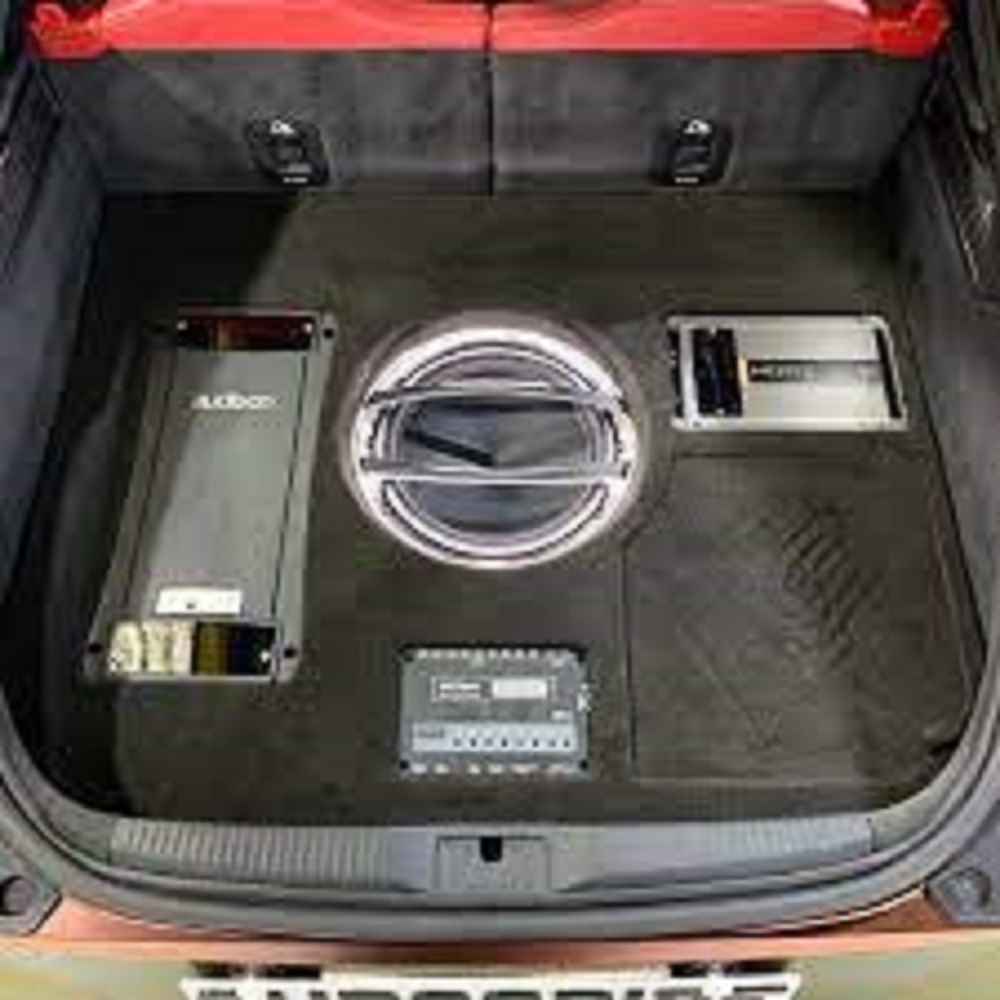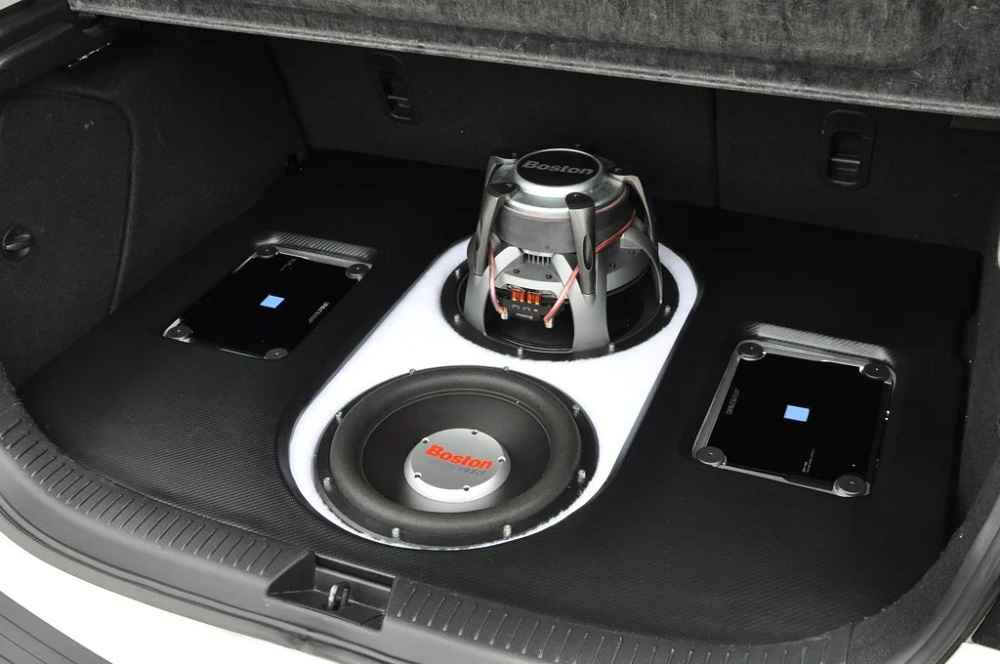Subwoofers are a vital component in any home theater or music system. They are responsible for reproducing low-frequency sounds and adding depth and impact to music and movies.
But, one question that often arises is whether subwoofers hit harder when they are facing up or down. This article will explore the factors that affect subwoofer performance and help you determine the best orientation for your subwoofer.

Factors that Affect Subwoofer Performance
There are several factors that can affect the performance of your subwoofer, including room acoustics, speaker placement, power handling, volume settings, type of subwoofer, subwoofer quality, speaker sensitivity, and crossover settings.
Understanding these factors can help you optimize your subwoofer for the best possible performance.
Room Acoustics:
The shape, size, and furnishings of your room can all impact the way your subwoofer sounds. In general, larger rooms with high ceilings and minimal furnishings will allow for better subwoofer performance.
Speaker Placement:
Where you place your subwoofer in the room can also have a big impact on its performance. Ideally, the subwoofer should be placed in a corner or near a wall to enhance the bass response.

Power Handling:
The power handling capability of your subwoofer will determine how much power it can handle without distorting the sound. If you have a high-powered subwoofer, you may want to turn down the volume to prevent damage to the subwoofer or your other speakers.
Volume Settings:
The volume setting on your subwoofer can greatly impact its performance. Too much volume can cause the subwoofer to distort the sound, while too little volume can result in weak, lackluster bass.
Type of Subwoofer:
Different types of subwoofers, such as sealed, ported, or band-pass, will each produce a different sound. Understanding the strengths and weaknesses of each type of subwoofer can help you choose the best one for your needs.
Subwoofer Quality:
The quality of your subwoofer can greatly impact its performance. High-quality subwoofers will produce a clearer, more accurate sound, while lower-quality subwoofers may produce a muddier, less defined sound.
Speaker Sensitivity:
The sensitivity of your subwoofer will determine how efficiently it converts power into sound. Higher sensitivity subwoofers will produce more sound for the same amount of power, while lower sensitivity subwoofers will require more power to produce the same volume.
Crossover Settings:
The crossover setting on your subwoofer will determine the frequency range that it will reproduce.
A higher crossover setting will cause the subwoofer to play fewer low-frequency sounds, while a lower crossover setting will allow the subwoofer to play more low-frequency sounds.
Benefits of Having Subwoofers Facing Up
There are several benefits to having your subwoofers facing up, including:
Better Sound Dispersion:
When subwoofers are facing up, they can produce sound in all directions, resulting in a more evenly distributed sound in the room.
Improved Bass Response:
Subwoofers facing up can produce stronger, more accurate bass because the sound waves are not being absorbed by the floor.
Better Control Over the Subwoofer:
When subwoofers are facing up, you have better control over their sound because you can adjust the crossover and volume settings more easily.
More Efficient Use of Subwoofer Energy:
Better Soundstage:
Subwoofers facing up can create a wider soundstage, resulting in a more immersive listening experience.
Better Low Frequency Control:
Subwoofers facing up can produce more accurate and controlled low-frequency sounds, resulting in better overall sound quality.
Drawbacks of Having Subwoofers Facing Up
While there are many benefits to having subwoofers facing up, there are also several drawbacks to consider, including:
Increased Risk of Damage to Subwoofer:
When subwoofers are facing up, they are more susceptible to damage from objects falling on them.
Increased Risk of Damage to Flooring:
Subwoofers facing up can cause damage to your flooring if the sound waves are too strong.
Reduced Bass Control:
Subwoofers facing up can sometimes produce boomy, uncontrolled bass because the sound waves are not being absorbed by the floor.
Reduced Soundstage:
Subwoofers facing up may produce a narrower soundstage because the sound waves are not being reflected off of the floor.
Factors to Consider When Deciding the Orientation of Subwoofers
When deciding the orientation of your subwoofers, there are several factors to consider, including:
- Room Acoustics: The shape, size, and furnishings of your room can all impact the way your subwoofers sound.
- Speaker Placement: Where you place your subwoofers in the room can also have a big impact on their performance.
- Personal Preferences: Ultimately, the best orientation for your subwoofers will depend on your personal preferences.
- Available Space: The amount of available space in your room can also impact the orientation of your subwoofers.
- Type of Subwoofer: Different types of subwoofers will perform differently when facing up or down.
- Speaker Sensitivity: The sensitivity of your subwoofers will also impact their performance when facing up or down.

Conclusion
In conclusion, the orientation of subwoofers can greatly impact their performance. Subwoofers facing up can produce better sound dispersion, improved bass response, better control, and a better soundstage.
However, subwoofers facing up can also be more susceptible to damage and can sometimes produce uncontrolled, boomy bass.
When deciding the orientation of your subwoofers, consider factors such as room acoustics, speaker placement, personal preferences, available space, type of subwoofer, and speaker sensitivity.
Experiment and make an informed decision based on your needs and preferences.
Can I use a subwoofer facing up in a small room?
Yes, you can use a subwoofer facing up in a small room, but you should be mindful of the sound waves and their potential impact on the room and its furnishings.
It’s important to experiment with speaker placement and adjust the volume and crossover settings as needed to find the best setup for your room and preferences.
Can I use a subwoofer facing up with a bookshelf speaker setup?
Yes, you can use a subwoofer facing up with a bookshelf speaker setup. In fact, having the subwoofer facing up can improve the overall sound quality and bass response of your speaker system.
What type of subwoofer is best for facing up?
There is no one type of subwoofer that is best for facing up. It depends on the specific model and its performance characteristics, as well as your room acoustics, speaker placement, and personal preferences.
Can I use a subwoofer facing up outdoors?
It’s not recommended to use a subwoofer facing up outdoors as the sound waves can cause damage to the subwoofer and surrounding environment. Instead, consider using a subwoofer that is designed specifically for outdoor use.
What happens if I use a subwoofer facing down?
If you use a subwoofer facing down, the sound waves will be absorbed by the floor, which can result in reduced bass control and a narrower soundstage.
However, subwoofers facing down are less susceptible to damage and may be a good choice for certain types of setups or environments.
